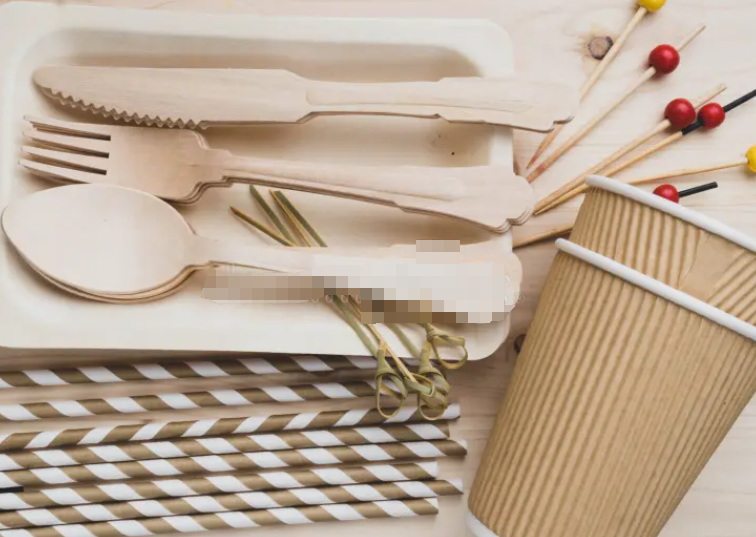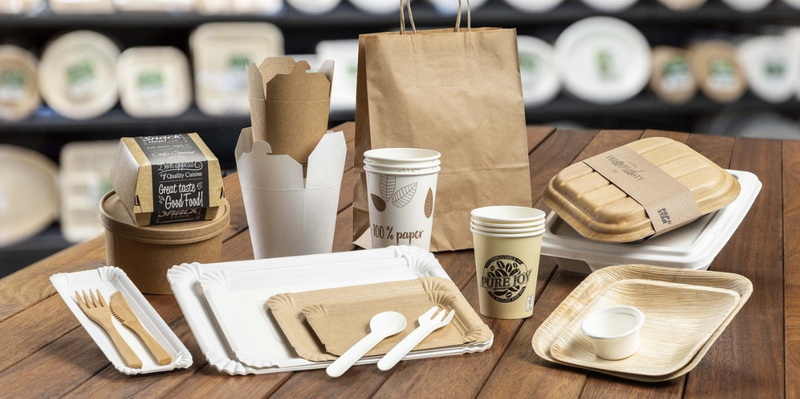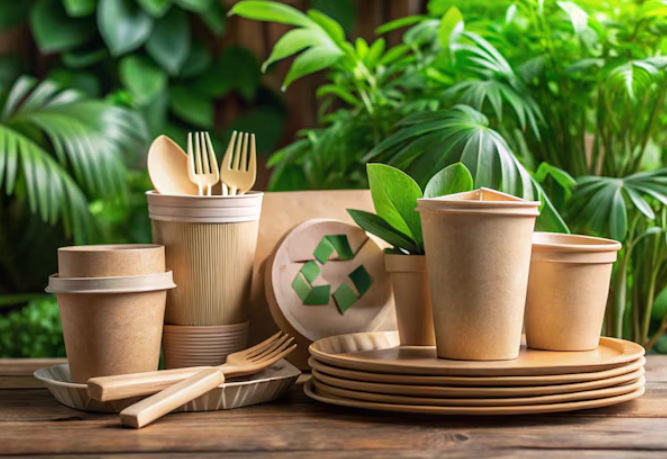
Content Menu
● What Are Eco Disposable Plates and Cutlery?
>> Common Materials Used
● Are Eco Disposable Plates and Cutlery Compostable?
>> Understanding Compostability
>> Certification and Standards
>> Proper Disposal Is Key
● Are Eco Disposable Plates and Cutlery Recyclable?
>> The Recycling Reality
>> Special Cases
● Environmental Benefits of Eco Disposable Plates and Cutlery
● Limitations and Challenges
● Best Practices for Using Eco Disposable Plates and Cutlery
● The Future of Eco Disposable Plates and Cutlery
● Conclusion
● FAQ
>> 1. What materials are most commonly used for eco disposable plates and cutlery?
>> 2. Can all eco disposable plates and cutlery be composted at home?
>> 3. Are any eco disposable plates and cutlery recyclable?
>> 4. How can I ensure my eco disposable plates and cutlery are truly compostable?
>> 5. What should I do if there is no commercial composting facility in my area?
As environmental concerns take center stage in daily life, more people are seeking sustainable alternatives to traditional plastic tableware. Eco disposable plates and cutlery have emerged as popular options for parties, events, restaurants, and even home use. But are these eco-friendly utensils truly compostable or recyclable? How should you dispose of them to ensure they fulfill their green promise? This comprehensive guide explores the materials, environmental benefits, limitations, and best practices for eco disposable plates and cutlery, helping you make informed and responsible choices.

What Are Eco Disposable Plates and Cutlery?
Eco disposable plates and cutlery are single-use tableware items designed to minimize environmental impact. Unlike conventional plastic utensils, which are made from petroleum-based materials and can persist in the environment for hundreds of years, eco-friendly alternatives are crafted from renewable resources and are intended to break down more quickly after use.
Common Materials Used
- Bamboo: Known for its rapid growth and renewability, bamboo is a popular material for both plates and cutlery. It is sturdy, naturally biodegradable, and can be composted.
- Sugarcane (Bagasse): Bagasse is a fibrous byproduct of sugar production. It is molded into plates and utensils that are compostable under the right conditions.
- Wood: Wooden cutlery, often made from birch or aspen, is biodegradable and can be composted if untreated.
- PLA (Polylactic Acid): This bioplastic is derived from plant starches such as corn or sugarcane. It looks and feels like plastic but is intended for composting in industrial facilities.
- Recycled Paper and Fallen Leaves: These materials are used primarily for plates and are biodegradable, often suitable for composting.
Are Eco Disposable Plates and Cutlery Compostable?
Understanding Compostability
A product labeled as "compostable" is designed to break down into natural elements in a compost environment, leaving behind nutrient-rich soil and no toxic residue. Compostability can be divided into two main categories:
- Home Compostable: Some eco disposable plates and cutlery, especially those made from bamboo or untreated wood, can break down in a backyard compost pile. However, the process may take several months or longer, depending on the composting conditions.
- Commercially Compostable: Many products, such as those made from PLA or bagasse, require the higher temperatures and controlled conditions of industrial composting facilities to decompose efficiently. In these facilities, the breakdown process is much faster and more complete.
Certification and Standards
When shopping for eco disposable plates and cutlery, look for certifications from reputable organizations. These certifications indicate that the product has been independently tested and meets strict compostability standards. Certified products are more likely to break down as intended, without leaving harmful residues.
Proper Disposal Is Key
For eco disposable plates and cutlery to deliver on their environmental promise, they must be disposed of correctly:
- Commercial Composting: Items labeled as "commercially compostable" should be sent to an industrial composting facility. If they end up in a landfill or regular trash, they may not decompose as intended.
- Home Composting: Bamboo and untreated wooden utensils can be added to home compost bins, provided they are not coated or treated with chemicals.
- Landfill: If compostable utensils are thrown in the trash and sent to a landfill, the lack of oxygen and microbial activity may prevent them from breaking down, similar to traditional plastics.
Are Eco Disposable Plates and Cutlery Recyclable?
The Recycling Reality
Most eco disposable plates and cutlery are not recyclable through standard municipal recycling programs. Recycling facilities are generally set up to process plastics, metals, and glass, not organic materials like bamboo, wood, or bagasse. Compostable bioplastics such as PLA can actually contaminate plastic recycling streams, causing operational issues for recycling plants.
Special Cases
- Wooden Cutlery: In rare cases, some local recycling programs may accept clean, untreated wooden cutlery, but this is uncommon. Always check with your local facility.
- Paper-Based Plates: If plates are uncoated and free from food residue, some recycling programs may accept them. However, most paper plates are better suited for composting due to food contamination and coatings.

Environmental Benefits of Eco Disposable Plates and Cutlery
Switching to eco disposable plates and cutlery offers several significant environmental advantages:
- Reduction in Plastic Pollution: These products help reduce the volume of plastic utensils that end up in landfills and oceans, where they can persist for centuries.
- Lower Carbon Footprint: Manufacturing eco disposable plates and cutlery from renewable resources typically consumes less energy and produces fewer greenhouse gas emissions compared to petroleum-based plastics.
- Support for Sustainable Agriculture: Choosing products made from rapidly renewable resources like bamboo or sugarcane supports sustainable farming practices.
- Healthier Soil: When properly composted, these items break down into nutrient-rich compost, which can help improve soil health and fertility.
Limitations and Challenges
While eco disposable plates and cutlery are a step in the right direction, they are not a perfect solution:
- Limited Composting Infrastructure: Not all communities have access to commercial composting facilities, which limits the effectiveness of many compostable products.
- Consumer Confusion: Many people are unsure whether to compost, recycle, or trash these items, leading to improper disposal.
- Greenwashing: Some products are labeled as "biodegradable" or "eco-friendly" without meeting rigorous standards. Always look for credible certifications.
- Landfill Persistence: If compostable products end up in landfills, they may not decompose as intended due to the anaerobic environment.
Best Practices for Using Eco Disposable Plates and Cutlery
To maximize the environmental benefits of eco disposable plates and cutlery, consider the following tips:
- Choose Certified Products: Look for third-party certifications to ensure true compostability.
- Understand Local Facilities: Research whether your community has access to commercial composting. If not, choose products that are suitable for home composting.
- Educate Users: At events or in workplaces, provide clear instructions and signage for proper disposal to prevent contamination of recycling and compost streams.
- Avoid Coated or Treated Items: Select uncoated, natural options whenever possible, as coatings can hinder composting or recycling.
- Reduce and Reuse: Even with eco-friendly options, reducing overall consumption and reusing where possible is the most sustainable choice.
The Future of Eco Disposable Plates and Cutlery
Innovation in materials and waste management practices continues to evolve. New plant-based polymers, improved composting infrastructure, and greater consumer awareness are making it easier to enjoy the convenience of disposable tableware while minimizing environmental impact. As demand grows, expect to see more options that balance functionality, aesthetics, and sustainability.
Conclusion
Eco disposable plates and cutlery offer a promising alternative to traditional plastics, helping to reduce waste and support a circular economy. However, their environmental benefits depend heavily on proper disposal and access to composting facilities. Most are not recyclable, and placing them in recycling bins can cause more harm than good. By choosing certified products, understanding local waste management options, and educating users, we can ensure that eco disposable plates and cutlery truly contribute to a cleaner, greener planet.

FAQ
1. What materials are most commonly used for eco disposable plates and cutlery?
Eco disposable plates and cutlery are typically made from bamboo, sugarcane (bagasse), wood, cornstarch (PLA), recycled paper, and sometimes fallen leaves. These materials are chosen for their renewability, strength, and compostability.
2. Can all eco disposable plates and cutlery be composted at home?
Not all eco disposable plates and cutlery are suitable for home composting. Bamboo and untreated wooden utensils generally break down in backyard compost piles, but items made from PLA or bagasse usually require the higher temperatures of commercial composting facilities.
3. Are any eco disposable plates and cutlery recyclable?
Most eco disposable plates and cutlery are not recyclable through standard programs. Materials like bamboo, wood, and bagasse are intended for composting, not recycling. Bioplastics like PLA should not be placed in recycling bins as they can contaminate the recycling stream.
4. How can I ensure my eco disposable plates and cutlery are truly compostable?
Look for third-party certifications from reputable organizations. These certifications guarantee that the products meet strict compostability standards and will break down safely in the appropriate composting environment.
5. What should I do if there is no commercial composting facility in my area?
If you do not have access to a commercial composting facility, choose eco disposable plates and cutlery that are labeled as suitable for home composting, such as bamboo or untreated wooden options. Otherwise, minimize use and consider reusable alternatives whenever possible.

















